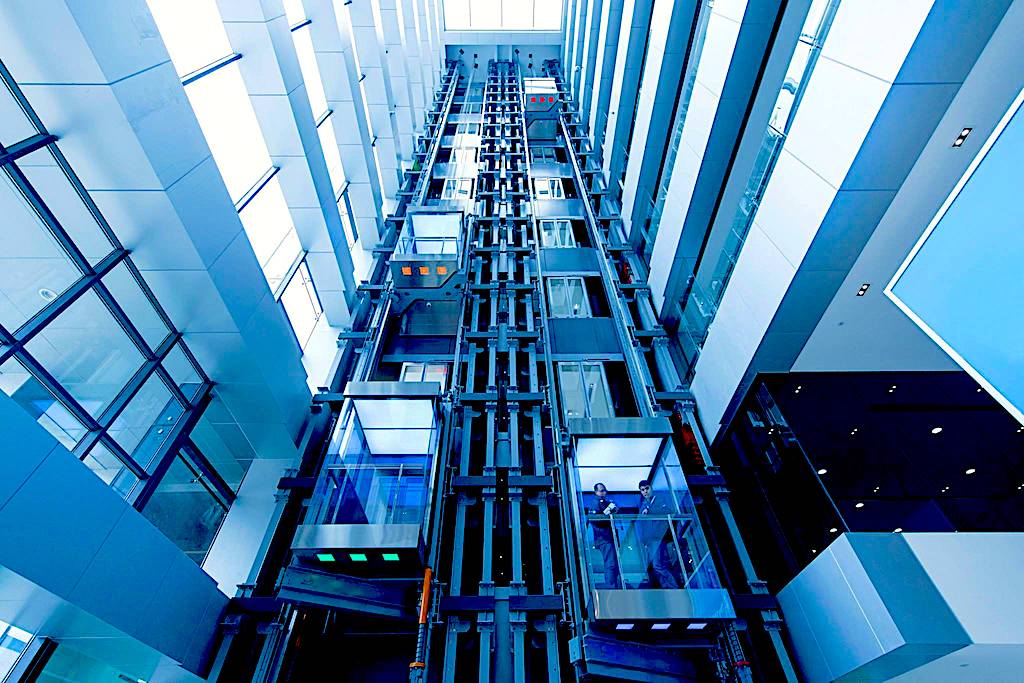 BIG DATA
BIG DATA
 BIG DATA
BIG DATA
 BIG DATA
BIG DATA
A list of the 10 large companies that have most successfully transformed their businesses through technology published in the Harvard Business Review last year included many of the usual suspects – and one that many people probably wouldn’t even recognize.
Thyssenkrupp AG, a German materials giant that can trace its roots back more than 200 years, made the list on the strength of the 47 percent of its total sales that now come from new growth areas.
ThyssenKrupp, whose principal businesses include steel manufacturing, automotive technologies and industrial equipment such as elevators, wouldn’t seem like a strong candidate for digital transformation, but a companywide effort to rethink customer value around data is beginning to bear fruit.
Among the success stories is MAX, the elevator industry’s first real-time, cloud-based predictive maintenance system that has reduced downtime for nearly 42,000 customers. MAX is the product of a partnership with Microsoft Corp. to use predictive analytics technology. In the process, ThyssenKrupp also adopted Microsoft HoloLens to support its elevator repair staff and, more recently, to design in-home staircase mobility systems for disabled consumers.
Those are just a few of the 26 digital transformation projects the industrial giant has ongoing in its North American division, which is headed by Chief Executive Patrick Bass (below). A mechanical engineer by training with nearly two decades of experience in ThyssenKrupp’s U.S. and German elevator operations, Bass is helping the company think differently about its core businesses, many of which are under fire by low-cost competitors and commoditization.
“We’ve gone through a process of ‘deproductizing’ the business because product lifecycles are shorter than ever,” he told SiliconANGLE in an interview. “We’re looking at all 42 of our businesses to see where we can drive new value.”
Digital transformation is often thought of as going hand-in-hand with major new investments in equipment, but ThyssenKrupp takes a more practical perspective. It spends on new sensors and gadgets only as a last resort, relying first upon data it already has. “Don’t get tied up in statistical regression and sensors,” Bass said. “You probably have more data than you realize.”
It also isn’t looking to make money on software or high-tech services. Unlike General Electric Co., which set lofty targets for software license sales and later had to backtrack, ThyssenKrupp sees data as a way to sell more elevators, shipbuilding equipment and auto parts. It’s about changing the conversation with the customer, Bass said.

Patrick Bass, CEO of ThyssenKrupp North America
It all started about four years ago with elevators and the crazy relationship building owners have with them. The fact is that most of the people who buy elevators don’t like them. They take up space, waste time and tend to break down a lot.
“It’s a business where the customer has to have the equipment, often by law,” Bass said. “When you go there to repair it, you’re disruptive. And there will still be times when the elevator breaks down.”
The standard maintenance practice in the elevator industry at the time was to monitor equipment and tell building owners when elevators broke down. ThyssenKrupp’s simple, yet revolutionary idea was, “We aren’t going to wait for them to break,” Bass said.
Predictive maintenance may be all the rage in industrial companies today, but that wasn’t the case four years ago. Learning to forecast equipment failures meant gathering data, but that didn’t mean installing new sensors. It turned out much of the necessary data was already locked up in the heads of the company’s elevator technicians.
They knew, for example, that elevator doors are more likely to fail on the ground floor than upper floors. They also knew that certain usage patterns were more likely to lead to breakdowns than others.
“We realized we didn’t have to put sensors in place; we already had the data,” Bass said. Digital transformation wasn’t about adding sensors; it was about capturing tribal knowledge and matching it to known usage patterns. “That was the beginning of our journey,” Bass said.
MAX has changed the conversation with customers about elevators. Although he didn’t provide specifics, Bass said service retention rates are up and the bidding process is now less about price than total value.
“We’ve seen growth, efficiency improvements and a change in the market’s view of our brand,” he said. Also gratifying is that all of the company’s major competitors has since followed suit with their own service organizations.
An essential part of digital transformation is taking a step back and asking what business you’re really in, the CEO said. “Many people would say elevators, but we’re really a transportation company. We move people,” he said.
Abstracting the business to a higher level not only unleashes creativity but energizes employees. Executives at ThyssenKrupp Elevator like to talk about the company’s role in building smarter cities and streamlining urban transportation.
“Many people start and end their days in an elevator,” Bass said. Knowing when people move up and down can be just as important in urban planning as knowing when they move side-to-side. That thinking led to innovations such as ThyssenKrupp’s introduction last year of the world’s first sideways-moving elevator, a technology that could ultimately change the way buildings are designed.
What have MAX and 25 other ongoing transformation projects taught Patrick Bass? One is that digital transformation is about setting realistic goals that translate back to customer value.
“We think in terms of one source, one truth, real-time information in a closed-loop system that creates value,” he said. “If it doesn’t create value that’s transformative, then you shouldn’t do it.”
It’s also a journey without any clear endpoint, he said. “It’s not one and done. It’s a new way of executing business on a continuous basis.”
And, he added, don’t forget the people. The company sucked years of domain knowledge out of the minds of its elevator technicians not to put them out of jobs but to make them more productive.
“If we weren’t keeping the service mechanic engaged, we weren’t going to succeed,” he said. “We needed to empower the employee.”
THANK YOU